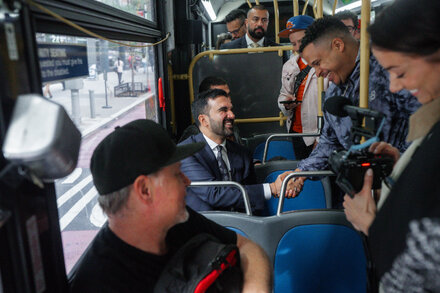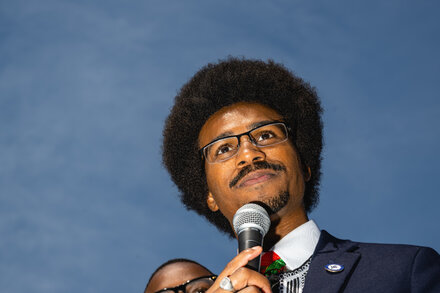Assemblymember Zohran Mamdani is pushing a comprehensive plan to significantly accelerate New York City’s notoriously slow bus service, particularly on some of its most beleaguered routes. This initiative aims to reclaim commuter time and enhance urban mobility for millions of residents.

New York City’s perennial struggle with sluggish bus speeds has once again taken center stage, as Assemblymember Zohran Mamdani of Astoria, Queens, is actively pushing a comprehensive plan aimed at significantly accelerating service on some of the city’s most beleaguered routes. The initiative specifically targets notorious bottlenecks, including a route identified as one of the slowest in the five boroughs, with the goal of reclaiming commuter time and enhancing urban mobility.
For millions of New Yorkers, buses remain a vital, yet often frustrating, mode of transportation. Anecdotal evidence and ridership data consistently highlight routes where average speeds plummet to single digits, transforming short trips into prolonged journeys. These delays impact everything from economic productivity to daily quality of life for residents who rely on buses for work, school, and essential services.
Assemblymember Mamdani’s proposal seeks to address these systemic issues through a multi-faceted approach. Key components of the plan include the expansion and stricter enforcement of dedicated bus lanes, the implementation of transit signal priority systems that give buses preferential treatment at intersections, and strategies for all-door boarding to reduce dwell times at stops. The plan also emphasizes the need for better street design and more frequent service to manage passenger flow efficiently.
“Our city’s buses are a lifeline for millions, yet they are often stuck in gridlock, wasting invaluable time for commuters,” Assemblymember Mamdani stated. “My plan is about making tangible improvements that prioritize people over traffic congestion, ensuring that our public transit system truly serves the public.”
The urgency of Mamdani’s push comes as the city grapples with ongoing transit challenges, compounded by evolving post-pandemic travel patterns. Advocates for public transportation have long called for significant investment and innovative solutions to bus service, arguing that improvements are critical for environmental sustainability, social equity, and economic vitality.
Addressing the Core of the Problem
The plan zeroes in on the operational inefficiencies that plague specific routes. Critics of the current system often point to a lack of dedicated infrastructure, such as insufficient bus lanes and inadequate enforcement of existing ones, as primary contributors to delays. Buses frequently find themselves ensnared in general traffic, unable to maintain consistent speeds.
Mamdani’s plan also seeks to leverage technological advancements, such as intelligent traffic light systems that can detect approaching buses and adjust signals to minimize stops. Furthermore, by advocating for all-door boarding, the plan aims to cut down on the minutes lost as passengers queue to pay fares or scan passes at a single door.
A spokesperson for the Metropolitan Transportation Authority (MTA) commented, “The MTA is continuously exploring and implementing strategies to improve bus service across the city, working closely with local elected officials and communities to identify and address specific challenges on our routes.”
The success of the proposed plan will likely hinge on collaboration between city agencies, the MTA, and community stakeholders. If adopted and effectively implemented, supporters believe Mamdani’s initiative could set a precedent for revitalizing bus service across New York City, turning one of its slowest modes of transport into a more reliable and efficient option for daily commuters.
Source: Read the original article here.





